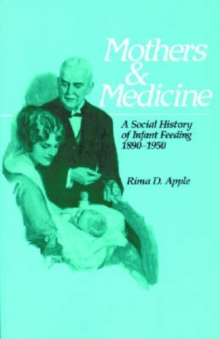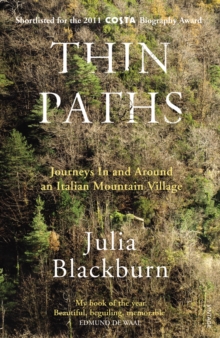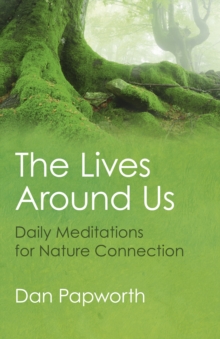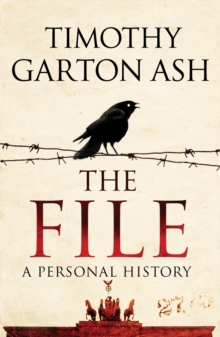Books I read in April 2019

Rima D. Apple’s Mothers & Medicine: A Social History of Infant Feeding 1890-1950 has been on my bookshelves for several years. Shortly after I moved to Scotland in 2005 I attended a really interesting guest lecture she gave on the history of infant feeding and I’ve been meaning to read this book ever since. She outlines the industry, medical, and cultural factors which led to the increase in formula feeding in America during the period. I must admit when I was reading about the various concoctions that were cobbled together for babies who were deemed to be failing to thrive, I was amazed that any of them survived at all! As well as the expected dominance of big business, one of the main take-homes I got from this was the incredible paternalism of the medical profession, wanting to maintain control over the process of infant feeding and position themselves, not mothers, as the experts. 4/5.

Well, my plan was to read a chapter a day of Emma Mitchell’s The Wild Remedy for 2 weeks. That happened for the first couple of chapters (as I was reading just before going to sleep). But then I picked it up one day during the day, and I ended up reading the rest of the book in a single sitting. It’s gorgeous. The author details, month by month, her walks in the countryside (mainly local to her, in the Cambridgeshire Fens, but occasionally further afield), and the impact that it has on her mental health (she lives with severe depression). During the year that she was writing this she had a particularly prolonged and serious depressive episode, which she doesn’t shy away from, but her writing is exquisite, and the importance of the outdoors for her wellbeing is made clear (whilst being very emphatic that she is not saying ditch the meds and hug a tree). Illustrated throughout with the author’s photos, paintings and sketches, it is a simply beautiful book. 5*

Tara Westover’s Educated is a memoir that I’ve been picking up and putting down for several months now. By the end I couldn’t put it down though. This is the memoir of her childhood as one of the several children in an extreme Mormon family, and her eventual move away from the family (where she was supposedly home-schooled, although the reality was basically working for her dad’s scrapyard business and trying to avoid the many horrific accidents that the various family members have (whilst avoiding either insurance or mainstream medicine)) to higher education and beyond.
What was clear from the very beginning was that Tara Westover is an extraordinarily gifted writer. She really has a way with words, and it was very easy to picture the places and people and events she was describing. She is also not afraid of ‘less is more’, and whilst there were plenty of horrific things going on, it never felt like she was describing events, arguments, fights, accidents or whatever just for the sake of it. Having said that, although I honestly wouldn’t call this a ‘misery memoir’, the first half of the book (which deals with her childhood before she leaves home to attend Brigham Young University) is pretty relentless, and I think that’s probably why I needed to keep taking breathers from it. The second half of the book details her time at BYU, figuring out a lot of things (like how to take exams and write essays, and events such as the Holocaust) that she’d never ever heard of before, and gradually finding her place and her feet and her voice, and then to her subsequent postgraduate experience at Cambridge and Harvard. This is the section I found really interesting, although here the ‘less is more’ didn’t work quite so well for me – there were a few places where the transformation from clueless undisciplined kid to serious scholar seemed to happen quite quickly without a lot of detail, as well as her recovery from what sounded like quite a serious mental breakdown, and so had to be taken on trust, whereas I’d have liked a bit more about how she got from A to B. What I did really like about this section though was how she described her relationship with her family evolving over time, and how the relationships with individual family members changed over time (not always for the better). That evolution over time was much more clearly portrayed, with fewer gaps.
Overall though, this is a fantastic memoir which is well worth the time, and a worthy 5* from me. It really is as good as the hype, in my view. 5/5.

Hooray for the library, thanks to them I found Julia Blackburn’s Thin Paths: journeys in and around an Italian mountain village, and it was gorgeous. Part memoir, part oral history of the elderly residents of the remote Italian village near the French border that she and her husband made their home. She details gradually getting to know the residents, and then gradually hearing, and getting their permission to write, their memories of WW2, partisans, Fascists, greedy landowners, and the other people that lived and worked there over the years. It’s gentle and beautiful. 4.5/5.

Dan Papworth’s The Lives Around Us: daily meditations for nature connection was the book I chose to read for Lent this year. He is a member of Cheltenham Forest Church, where a couple of my friends are also involved (in fact they appear in the acknowledgements). This book features 40 daily readings, each focusing on a different animal, plant or mineral found in the UK. He explains about the life of the creature, and also features a passage from the Bible and a section on prayer and reflection. It’s nice and crusty, and right up my street!
I did wish that the Bible passages he had chosen, particularly for the last week, had been more reflective of the Easter story (so the Last Supper, Gethsemane, etc), rather than more general passages, although that does mean that this book isn’t just restricted to Lent but can be used throughout the year. What raised it up for me from a 4* read was the concluding chapter, where he looks more generally at the links between Christian spirituality and nature, and our responsibilities (particularly given environmental degradation and climate change) and I’ve added an extra half star just for that. 4.5/5.

Journalist and academic Timothy Garton Ash writes in The File: A Personal History about discovering his Stasi (East German secret police) file, and sets out to track down the informers and Stasi officers who were monitoring him during his student days in West and East Berlin in the 1970s and 80s. It’s not just a dry ‘he said, she said’ description though, but musing on memory, morality, nation, history, not to mention the secret service activities of the UK state, as well as the actual content of the file. The 2009 afterword (the book was originally published in 1997) has a very interesting discussion about present-day surveillance and politics, and the relevance of the Stasi to this question (although now, 10 years after the Afterword, even that feels a bit out of date, with him talking about “personal information on social networking sites such as Facebook and MySpace” – although plenty of it is pretty prescient still). A very interesting read. 4.5/5.

Upbeat: The Story of the National Youth Orchestra of Iraq, by Paul MacAlindin, is the sometimes inspirational, sometimes frustrating, often exhausting tale of the formation of the NYOI, from the initial idea in 2008 to its final summer school and concert in France in 2014. The author was the musical director, and much of the vision and energy required to form and maintain the orchestra, when they were only meeting once a year for a summer school and having to negotiate the complex politics of having players from all ethnic groups and backgrounds and languages, was down to him pretty much single-handedly. Each of the summer schools (the first few in Iraqi Kurdistan, then Beethovenfest in Germany, the Edinburgh Festival Fringe and finally in Aix en Provence in France, plus the ultimately unsuccessful attempt to get them to the US the following year), are described in detail, plus the behind the scenes activity the rest of the year. The final few chapters detail the achievements and learning from the years of NYOI.
What the author does really well here is portray the frustrations and lows of the story, but also the moments of inspiration and breakthrough, and the growth of everyone involved. Whilst it’s uplifting, it’s also realistic, and I think that’s what I liked most about it. 4/5.
